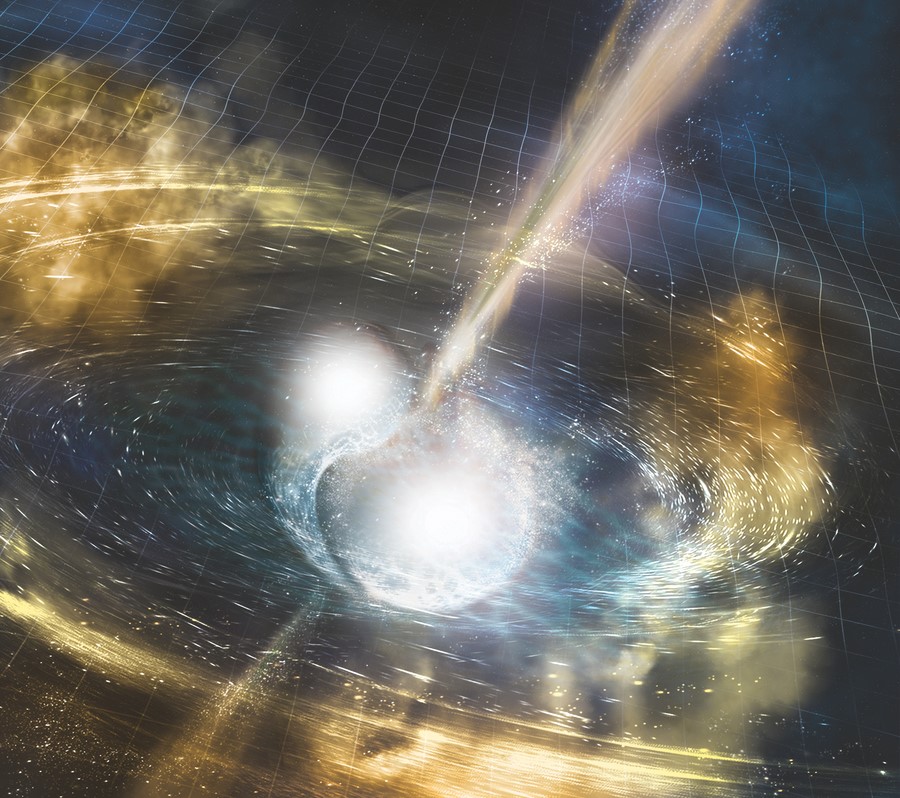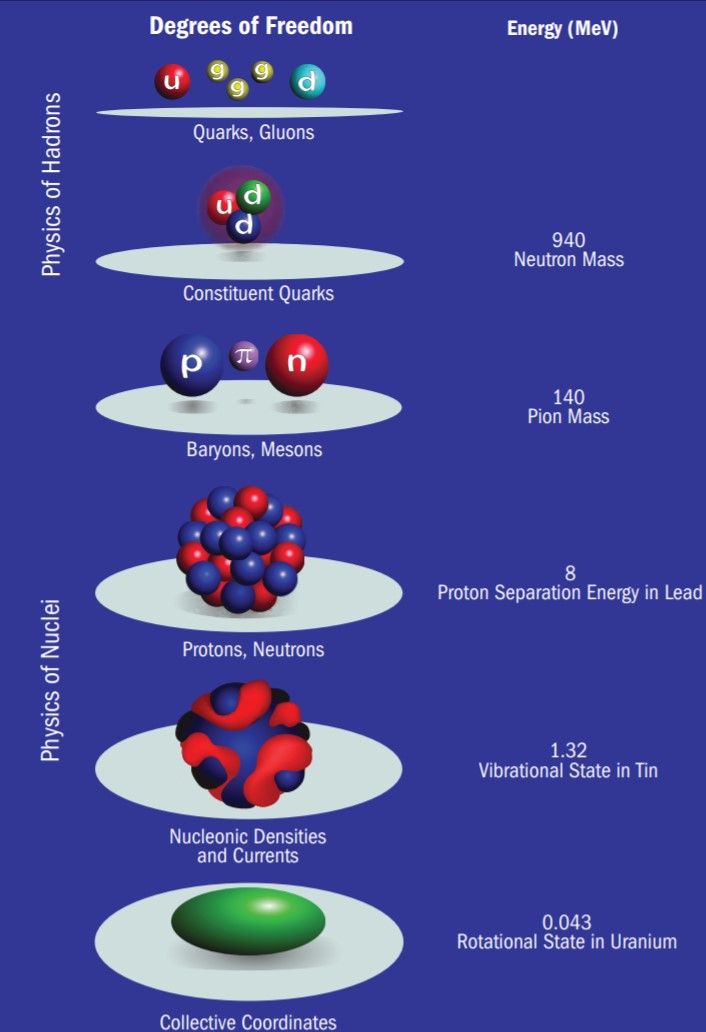Nuclear interactions are believed to be governed by quantum chromo-dynamics (QCD), and the ultimate goal of nuclear theory is thus to describe properties and dynamics of nuclear systems starting from QCD. The QCD at usual circumstances, i.e., at low-energy, the interactions among quarks and gluons of QCD are quite strong. As a result, QCD becomes non-perturbative and quarks and gluons are confined in hadrons such as protons, neutrons, pions, and so on, and the majority task of nuclear theory is to describe nuclear systems in terms of these degrees of freedom by using various effective field theories and models of low-energy QCD.
The theory group at CENS is trying to have robust and accurate understandings and predictions on the properties of diverse nuclear systems, especially the nuclear structures and nuclear reactions that play important roles in nuclear astrophysics and the exotic nuclei. Through these efforts, we want to unveil how QCD governs various nuclear phenomena, and address the fundamental questions of nuclear science such that the origin of elements of our universe and the limits of nuclear stability.
The equation of state (EoS) or the total energy per nucleon of nuclear matter determines the basic bulk properties of neutron stars and supernovae. The EoS can be expressed as a function of nuclear matter density. Nuclear matter is known to be incompressible, much similar to water, and thus the density of the center of heavy nucleus is almost constant regardless of the species of nuclide. The EOS at the saturation density is relatively well-known since it can be inferred from the properties of heavy nuclei. However, at the core of neutron stars, the gravitational force is so strong, and the nuclear matter density becomes a few times of the saturation density. Such a high density is not easily accessible by terrestrial experiments, the EOS in that circumstance is barely known. Theoretical studies for the EOS of nuclear matter are usually based on EFTs and nuclear models. The most severe obstacle in this direction is the lack of experimental data. A neutron star serves as an astrophysical laboratory (see Fig. 1). That is, the observed masses and radii of neutron stars help a lot in constraining models for nuclear matter. Fortunately, recent detection of gravitational waves coming from neutron star mergers gives us additional information. The EOS at high-density is one of the hottest topics in nuclear physics.

Figure 1. Artistic rendering of two merging neutron stars. Developing the nuclear equation of state which can elaborate on the nucleosynthesis process which take place in such events is a key research topic in nuclear theory. Figure credit to NSF/LIGO/Sonoma State University/A. Simonnet.
As mentioned, effective field theories (EFTs) of QCD is mainly used to understand and describe nuclear reactions and structure phenomena. Chiral perturbation theory and EFT are constructed based on the spontaneously broken chiral symmetry of QCD. It consists of pions and nucleons as pertinent degrees of freedom, and has been proven to be extremely powerful in making predictions from first principles on nuclear forces and electro-weak responses of nuclear systems, for example. At a lower energy scale far below the pion mass, there exist cluster EFTs which take nuclear clusters (but not pions, see Fig. 2) as elementary particles. By not considering pions as the basic constituents, a huge theoretical simplification is achieved. Such cluster EFTs are highly efficient in describing the nature of many nuclear systems, especially the halo nuclei. Theoretical efforts are also putting in the direction to link the phenomenological effective interactions of conventional shell models to QCD by means of EFTs.

Figure 2. Energy scales and relevant degrees of freedom. Taken from Bertsch, G. F., Dean, D. J., & Nazarewicz, W., Computing Atomic Nuclei: The Universal Nuclear Energy Density Functional (2007).
Nuclear reactions, direct and indirect, are the key pillar to reveal the mysteries of the Universe and the origin of elements. They serve also as the playground to test theories and models. We perform various nuclear reaction studies including code simulations and developing new models. Especially, nuclear reactions with exotic nuclei are highly interesting as they would enable to go into the unexplored territory of the chart of nuclides. We closely collaborate with experimental groups for the studies of nuclear reactions.